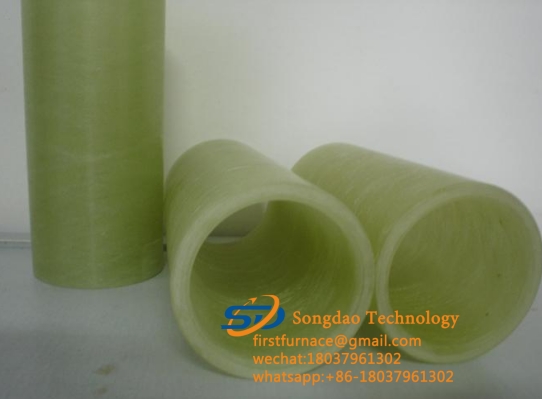- 08
- Feb
Technológia výroby a vývoj a aplikácia sklenených trubíc
Technológia výroby a vývoj a aplikácia sklenených trubíc
Existujú tri hlavné typy trubica zo sklenených vlákien production processes: reciprocating filament winding process, continuous filament winding process and centrifugal casting process.
Proces navíjania vlákna s vratným pohybom (patriaci k metóde s pevnou dĺžkou): V tomto procese sa ponorná nádrž vratne pohybuje s rotujúcim tŕňom a dlhé vlákna zo sklenených vlákien sú umiestnené v určitom šikmom uhle vzhľadom na os vretena a pomocný uhol (tj uhol navíjania) je riadený pomerom rýchlosti pohybu namáčacej nádrže k rýchlosti otáčania tŕňa a translačný pohyb namáčacej nádrže je riadený počítačovým elektromechanickým riadením. Počet vrstiev vinutia sa postupne zvyšuje, až kým sa nedosiahne projektovaná hrúbka steny. Po dokončení navíjania je živica vo výrobku v podstate vytvrdená. Po vytvrdnutí sa tŕň vyberie zo sklolaminátovej rúry.
Continuous filament winding process (belonging to continuous method): The process is that the tube passes through a feeding station that supplies resin pre-impregnated roving, chopped glass fiber reinforced plastic fiber and resin sand mixture in motion, and the tube is continuously advancing in the core mold. made in.
Centrifugal casting process (belonging to the fixed-length method): In this process, the cut glass fiber reinforced material and sand are fed into a steel mold fixed on the bearing, and the unsaturated resin with catalyst is injected into one end of the steel mold to make the steel mold. It impregnates the reinforcing material. Under the action of centrifugal force, the resin replaces the air in the fibers and fillers, thereby producing a dense composite material without pores. Due to the action of centrifugal force, the inner wall of the tube forms a smooth and clean resin-rich inner surface layer. Cures at higher temperatures. The pipe made by this method is also called glass fiber reinforced plastic sand pipe.

